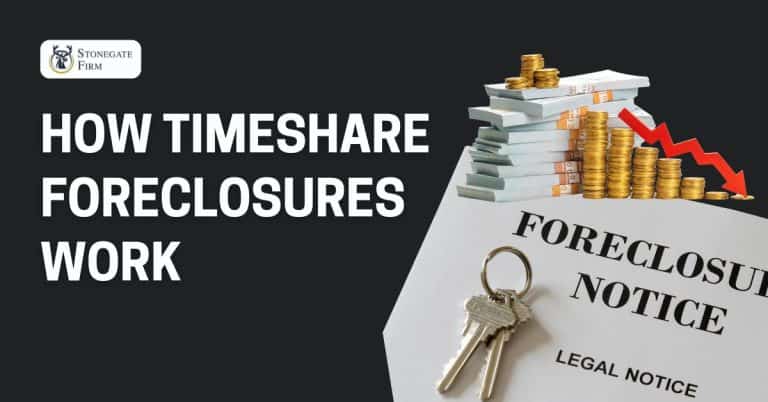Owning a timeshare comes with a variety of responsibilities, one of which is the inevitable remodeling or renovation costs that timeshare resorts impose from time to time.
Timeshare owners often view these remodels, whether it’s updating the interior to maintain a certain standard or conducting necessary repairs, as a way to preserve or increase the property’s value.
However, what many timeshare owners don’t realize are the hidden costs that accompany these renovations.
Understanding these expenses is crucial to making informed decisions about your timeshare ownership.
These hidden costs can quickly add up and significantly increase the overall financial weight.
In this blog, we’ll explore the various costs associated with timeshare remodeling, from mandatory fees to unexpected assessments, financing options, and more.
Mandatory Remodeling Fees
The resort’s mandatory remodeling fees are one of the primary costs associated with timeshare remodeling is the mandatory remodeling fees imposed by the resort.
Timeshare resorts typically schedule periodic upgrades to keep the property attractive and in line with industry standards. Although this may seem reasonable, the owners often incur additional fees to cover these remodeling costs.
These fees are non-negotiable, meaning that even if you’re not planning to use the timeshare during the remodel or feel the updates aren’t necessary, you are still responsible for paying them.
Depending on the extent of the renovations, these mandatory fees can range from hundreds to thousands of dollars, making timeshare ownership much more expensive than initially anticipated.
Furthermore, resorts rarely provide transparent breakdowns of these fees, leaving owners in the dark about what exactly they are paying for. This lack of transparency makes it difficult to budget for these expenses, leading to financial stress for many owners.
Why this matters: Understanding the mandatory remodeling fees can help you plan for the future and avoid unpleasant surprises. Always carefully review your timeshare agreement to ascertain the frequency of scheduled remodeling and the potential contribution from you.
Hidden Fees and Assessments
In addition to the mandatory remodeling fees, timeshare owners can also face a variety of hidden fees and assessments.
Resorts often levy special assessments when major repairs or upgrades are required, such as roof replacements, plumbing updates, or new amenities. These special assessments are typically unforeseen and can quickly add to your financial burden.
Furthermore, some resorts may impose additional fees for things like permits, insurance, and even labor costs during a remodeling project. It may be difficult for owners to accurately gauge the total cost of the renovation if they are unaware of these extra charges upfront.
These hidden fees often come with little to no warning, catching owners off guard and potentially leading to financial strain.
Many timeshare owners report that these assessments feel like an extra layer of cost beyond the already expensive maintenance fees they are required to pay each year.
Why this matters: To avoid financial surprises, request a full disclosure of all potential fees and assessments before agreeing to any remodeling.
While resorts may not always be forthcoming, it’s essential to ask questions and be proactive about understanding all associated costs.
Financing Options and Interest Rates
Many timeshare owners do not have the option to pay for remodeling out of their own funds.
In these cases, the resort or a third-party lender may offer financing options to cover the remodeling expenses. While this can be a convenient solution, it’s important to be aware of the interest rates and repayment terms associated with these financing plans.
Timeshare financing often comes with higher interest rates compared to traditional home improvement loans, which can dramatically increase the total cost of the project.
For example, a loan with a high interest rate may seem manageable initially, but over time, the interest can add up to thousands of dollars in additional costs.
In some cases, resorts may also require owners to secure personal loans or use credit cards to cover remodeling costs, both of which can have unfavorable interest rates and terms. Due to interest and fees, owners end up paying far more than the initial remodeling cost.
Why this matters: Before agreeing to any financing, compare your options and calculate the total cost over time, including interest. If possible, try to avoid high-interest loans that could significantly increase the financial burden of remodeling your timeshare.
Depreciation and Resale Value
While remodeling may improve the appearance or functionality of your timeshare, it doesn’t always translate to an increase in resale value.
In fact, many timeshare owners find that despite spending thousands of dollars on renovations, their resale value remains stagnant or even decreases over time.
Timeshares are notorious for their poor resale value, largely due to oversupply in the market and declining demand for timeshare ownership.
In many cases, timeshare owners struggle to sell their units, even after making significant upgrades. Often, a sale cannot recover the costs of remodeling, leaving owners with a net loss.
Additionally, timeshares tend to depreciate over time, much like a car. While remodeling may extend the property’s lifespan, it doesn’t prevent the overall depreciation that occurs in the timeshare market.
Why this matters: If you’re considering remodeling your timeshare with the intention of selling it, think carefully. Investing in renovations might not yield a higher resale price, potentially leading to a greater loss over time.
Opportunity Cost
The opportunity cost is another factor to consider when evaluating the cost of timeshare remodeling.
Opportunity cost refers to the potential benefits you forgo when you spend money on one option rather than another. In this scenario, you could allocate the money for timeshare remodeling towards other investments or financial goals.
For example, instead of spending thousands of dollars on mandatory remodeling fees, special assessments, or high-interest financing, you could invest that money in stocks, bonds, or even a savings account. In the future, these alternatives may offer higher returns or more financial flexibility.
Additionally, by allocating funds towards timeshare remodeling, you may miss out on opportunities to travel more freely, upgrade your primary residence, or pursue other financial ventures. It’s important to weigh the long-term value of timeshare remodeling against other potential investments before making a decision.
Why this matters: Consider the opportunity cost of remodeling your timeshare and think about how that money could be better spent elsewhere, such as exiting the timeshare altogether. This can help you make more strategic financial decisions that align with your long-term goals.
Speak to a Timeshare Exit Expert
Timeshare remodeling comes with a host of hidden costs that many owners fail to anticipate.
From mandatory remodeling fees to unexpected assessments, high-interest financing, and depreciation, the financial burden can be substantial. It’s crucial to carefully consider these expenses and their long-term impact before committing to any remodeling projects.
If you’re feeling overwhelmed by the costs and complexities of timeshare ownership, you’re not alone.
At Stonegate Firm, we specialize in helping timeshare owners exit their contracts and regain control of their finances. Don’t let hidden remodeling costs drain your wallet—contact us today for a free consultation and explore your timeshare exit options.
Do the hidden costs of timeshare remodeling weigh you down?
At Stonegate Firm, we help timeshare owners navigate their options and find a way out.
Contact us today at or https://stonegatefirm.com/contact/ for a free consultation and take the first step toward financial freedom.




